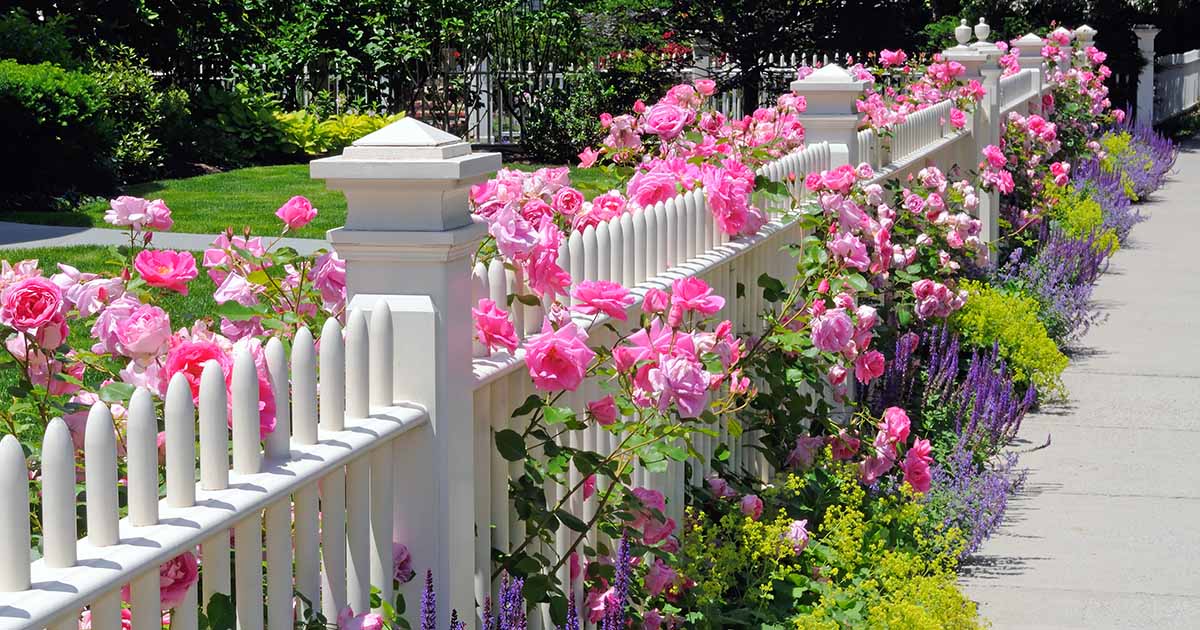Discover Where is the Best Place to Plant Roses in Your Yard?

When it comes to cultivating a vibrant garden, few flowers can rival the beauty and elegance of roses. However, successful rose gardening begins with selecting the ideal location within your yard. The right spot can significantly influence the health, growth, and blooming potential of your roses. In this article, we'll explore the key factors to consider when determining the best place to plant roses, including sunlight exposure, soil type, and protection from harsh weather. Whether you’re a seasoned gardener or a novice, these tips will help you create a stunning rose garden that enhances your outdoor space.
Optimal Locations for Planting Roses in Your Yard
To ensure that your roses thrive, selecting the best location in your yard is crucial. Roses require ample sunlight, so choose a spot that receives at least 6 to 8 hours of direct sunlight daily. It's also important to have well-drained soil, as roses do not fare well in overly wet conditions. Additionally, consider the proximity to structures that may provide shelter from harsh winds and the potential for disease due to poor air circulation. Ideally, plant your roses in an area that is easily accessible for maintenance and pruning, allowing them to flourish beautifully in your garden.
Sunlight Requirements
Roses need a minimum of 6 to 8 hours of full sunlight each day for optimal growth. In shaded areas, their development can be stunted, and blooming may be poor. Positioning them in a spot that avoids dense overhead foliage will help maximize their sun exposure, resulting in a healthier and more vibrant flowering.
Soil Quality
The quality of soil is another critical factor when planting roses. They thrive in well-drained, loamy soil rich in organic matter. Heavy clay soils retain too much moisture, which can lead to root rot, while sandy soils may drain too quickly. Conduct a soil test to determine the pH, aiming for a slightly acidic to neutral pH range of 6.0 to 7.0, to create the ideal growing conditions.
Protection from Wind
Wind can be detrimental to rose plants, especially for those with delicate blooms. When selecting a planting location, look for areas that provide some protection from strong winds. Planting your roses near walls, fences, or larger shrubs can help create a buffer, ensuring that the flowers remain intact during stormy weather and minimizing damage.
Spacing and Accessibility
Proper spacing is essential for the health of your roses. Each rose bush typically requires a spacing of about 2 to 3 feet apart to allow for proper air circulation and growth. Additionally, consider accessibility for watering, pruning, and inspecting the plants for pests or diseases. An organized bed layout can significantly enhance your gardening experience.
Environmental Considerations
When choosing a site for planting roses, it's essential to consider the environmental factors unique to your yard. Factors such as local climate, humidity levels, and exposure to natural elements can affect rose growth. Additionally, examining drainage patterns in your yard will ensure that water does not pool near the roots, which can lead to complications in the plant's health.
| Factors | Optimal Conditions |
|---|---|
| Sunlight | 6 to 8 hours of direct sunlight |
| Soil Type | Well-drained, loamy soil |
| Wind Protection | Near walls or larger plants |
| Spacing | 2 to 3 feet apart |
| Environmental Factors | Considering local climate and drainage |
What side of the house should you plant roses on?

To determine the best side of the house to plant roses, several factors must be considered, particularly sunlight exposure, climate conditions, and protection from harsh elements. Roses thrive in full sun, which typically means they require at least six hours of direct sunlight each day. Consequently, the optimal side of the house for planting roses is usually the south-facing or west-facing side. Here’s a more detailed exploration of these factors:
Sunlight Requirements
Roses are sun-loving plants that flourish in bright light. To ensure they blossom beautifully, consider the following:
- Optimal Light: Planting roses on the south or west side allows them to receive the most sunlight throughout the day.
- Morning Sunlight: Areas that receive morning sunlight are particularly beneficial, as this helps dry the leaves and prevents fungal diseases.
- Shade Considerations: Avoid planting roses in full shade, as it can stunt their growth and lead to poor flowering.
Climate and Weather Conditions
The local climate plays a crucial role in determining the best planting location. Here are key points to consider:
- Temperature: In hotter climates, some afternoon shade can help protect roses from scorching temperatures.
- Wind Protection: Planting on a side of the house that is sheltered from strong winds can protect fragile blooms.
- Microclimates: Identifying specific areas around your house that act as microclimates can help in selecting the right location.
Soil Quality and Drainage
The quality of soil and its drainage capacity are critical for healthy rose growth. Focus on:
- Soil Type: Roses prefer well-draining soil. Test and amend the soil if necessary to enhance drainage.
- Mulching: Applying mulch around the base of the roses can help retain moisture and improve soil health.
- Soil pH: Roses thrive in slightly acidic to neutral soil, typically a pH of 6.0 to 6.8.
Companion Plants and Landscape Design
Considering the overall garden design and companion planting is essential. Here are some tips:
See also:
- Companion Plants: Plant roses alongside companions like lavender or salvia to enhance their growth and deter pests.
- Aesthetic Balance: Incorporating roses into your landscape should complement other plants for a cohesive look.
- Spacing: Ensure roses have enough space for growth, particularly if others are planted nearby.
Pest and Disease Management
Location can influence the prevalence of pests and diseases. To manage this aspect:
- Air Circulation: Good air circulation around roses helps reduce the risk of diseases like powdery mildew.
- Monitoring: Regularly check for pests, especially in areas that may remain damp or shaded.
- Natural Predators: Encourage beneficial insects in your garden to keep pest populations under control.
Where not to plant roses?
:max_bytes(150000):strip_icc()/GettyImages-2150818868-0e7708cc239247b68bf29c5b5f55eabe.jpg)
When considering growing roses, it's crucial to identify the locations that are not suitable for planting these beautiful flowers. The wrong environment can lead to poor growth, disease, and overall dissatisfaction with the garden. Here are some areas to avoid when planting roses.
1. Areas with Poor Drainage
Planting roses in poorly drained areas can lead to root rot and other diseases that can devastate the plants. Roses prefer well-draining soil to thrive and maintain their health.
- Look for signs of standing water after rainfall.
- Avoid areas where water tends to collect or pool.
- Consider soil improvement or raised beds if you must plant in these regions.
2. Locations with Excessive Shade
Roses require a good amount of sunlight to bloom successfully. Planting them in overly shaded areas will hinder their growth and flowering.
- Assess the amount of sunlight the area receives daily.
- Avoid planting under large trees or near buildings that block sunlight.
- Choose locations that receive at least 6 hours of direct sunlight per day.
3. Areas with Extreme Temperatures
Roses are sensitive to extreme weather conditions. Planting them in regions that experience harsh winters or blistering summers can pose a challenge.
- Research your local climate to determine if it is suitable for rose cultivation.
- Avoid areas subject to freezing temperatures or heatwaves.
- Consider planting varieties that are known to withstand your area's climate if necessary.
4. Spots Near Root Invasive Plants
Competing with other plants for nutrients, water, and sunlight can stunt the growth of roses. Areas where invasive plants thrive are not ideal.
- Identify plants in the area that have aggressive root systems, such as bamboo or certain types of grass.
- Avoid locations where these plants are prevalent, as they can overshadow roses.
- If unavoidable, consider barrier methods to protect your rose's root system.
5. Near Air Conditioning Units or Heating Vents
Placing roses too close to air conditioning units or heating vents can cause stress to the plants due to fluctuating temperatures.
- Recognize areas where hot or cold air is circulated excessively.
- Avoid locations directly adjacent to these systems to prevent temperature shock.
- If planted nearby, ensure that the roses have protective barriers against direct airflow.
Where is the best place to plant roses in the ground?
:max_bytes(150000):strip_icc()/how-to-plant-roses-1403055-1247cb901e7e431da47d4ce023b953a9.png)
To select the best place to plant roses in the ground, it is essential to consider a variety of environmental factors, which will significantly affect their growth and blooming. The ideal spot for roses should provide optimal sunlight, appropriate soil conditions, and sufficient air circulation. Here are key considerations to ensure that your roses thrive:
1. Sunlight Requirements
Roses flourish best when they receive at least 6 to 8 hours of direct sunlight each day. Sunlight is crucial for their growth and blooming process. Here’s what to consider:
- Morning sunlight is particularly beneficial as it helps dry off dew and prevents fungal diseases.
- Avoid shaded areas, as insufficient light can result in weak plants and fewer flowers.
- Position roses in a south-facing garden beds for maximum light exposure.
2. Soil Quality
The soil in which roses are planted should be well-draining, rich in organic matter, and slightly acidic to neutral in pH (around 6.0 to 7.0). Proper soil conditions will ensure healthy growth. Key points include:
- Incorporate compost or well-rotted manure to improve soil structure and nutrient content.
- Avoid heavy clay soils that retain water, as this can lead to root rot.
- Consider conducting a soil test to assess pH and nutrient levels for optimal growth.
3. Air Circulation
Good air circulation around rose bushes is essential for preventing diseases. Crowded plants can become susceptible to fungal infections. Important factors include:
See also:
- Space roses adequately, typically 18 to 24 inches apart, to allow air to flow freely.
- Avoid planting roses against walls or fences that can block air movement.
- Prune bushes regularly to maintain shape and improve airflow between them.
4. Protection from Wind
Roses can be vulnerable to strong winds, which can damage flowers and stalks. Choosing a planting location that offers some degree of wind protection is beneficial. Consider the following:
- Plant roses near a natural barrier like a hedge or fence to reduce wind impact.
- In open areas, create windbreaks using taller plants or structures.
- Consider the prevailing wind direction when selecting locations to further enhance protection.
5. Drainage Considerations
As mentioned, roses do not do well in waterlogged conditions. Ensuring good drainage is vital to garden success. Here are some drainage tips:
- Choose a planting area slightly elevated or on a slope to promote water runoff.
- Incorporate coarse materials like gravel or sand into the planting hole to help with drainage.
- Avoid locations where puddles form after heavy rainfall.
What is the best month to plant a rose bush?

The best month to plant a rose bush typically varies depending on the climate and region. However, in general, it is advisable to plant rose bushes in spring, specifically between April and June, when the soil has warmed up and the risk of frost has passed. This timing helps the plants establish strong roots before facing the heat of summer.
Climate Considerations
The climate significantly influences the optimal month for planting rose bushes. In warmer regions, early spring might be ideal, while in colder areas, it may be best to wait until the danger of frost has completely passed. Factors to consider include:
- Frost Dates: Be aware of local frost dates to avoid damage.
- Soil Temperature: Soil should be around 60°F (15.5°C) for optimal growth.
- Moisture Levels: Ensure adequate rainfall or irrigation in the spring months.
Soil Preparation
Proper soil preparation is essential for healthy rose bush growth. Before planting, the soil should be well-drained and enriched with organic material. Guidelines for preparing your soil include:
- Testing Soil pH: Ideal pH for roses is between 6.0 and 6.8.
- Amending Soil: Use compost or well-rotted manure to improve fertility.
- Tilling: Loosen the soil to promote root growth and drainage.
Choosing the Right Variety
Different varieties of rose bushes may have specific planting requirements. Selecting the right type for your location can affect success. Important aspects to consider include:
- Hardiness Zones: Know your USDA hardiness zone to select suitable varieties.
- Growth Habit: Consider bush, climbing, or ground cover types.
- Blooming Season: Choose varieties that bloom in your preferred timeframe.
Caring for Newly Planted Roses
Once you plant your rose bush, proper care is crucial for its establishment and growth. Key care tips involve:
- Watering: Maintain consistent moisture, especially in the first weeks.
- Mulching: Apply mulch to retain moisture and suppress weeds.
- Fertilizing: Use a balanced fertilizer in the growing season for nutrient support.
Common Mistakes to Avoid
Avoiding pitfalls is essential for the successful planting of rose bushes. Common mistakes that can hinder growth include:
- Planting Too Deep: Ensure the graft union is level with the soil surface.
- Ignoring Sunlight Needs: Roses typically require at least 6 hours of sun.
- Overwatering: Prevent root rot by allowing the soil to dry between waterings.
Questions from Our Readers
Where is the best place to plant roses in your yard?
The best place to plant roses in your yard is in a location that receives at least 6 to 8 hours of sunlight each day. This exposure to sunlight helps them thrive and bloom beautifully. Additionally, ensure the spot has good drainage to prevent waterlogging, which can lead to root rot.
What type of soil is ideal for planting roses?
Roses prefer well-draining soil that is rich in organic matter. A slightly acidic to neutral pH level, around 6.0 to 6.8, is ideal for promoting healthy growth. Mixing in compost or well-rotted manure can enhance soil fertility and improve drainage.
Should I consider wind protection for my roses?
Yes, providing wind protection for your roses is beneficial, especially in more exposed areas of your yard. Placing them near a fence or planting shrubs around them can serve as a natural barrier, helping to reduce stress from harsh winds, which can damage the plants.
Is spacing important when planting roses?
Absolutely, proper spacing is crucial when planting roses to ensure they have adequate air circulation and room to grow. Generally, rose bushes should be spaced 2 to 3 feet apart depending on their variety, allowing for healthy development and minimizing the risk of disease.
See also:

If you want to read more articles like Discover Where is the Best Place to Plant Roses in Your Yard?, we recommend you check out our Roses category.
Leave a Reply